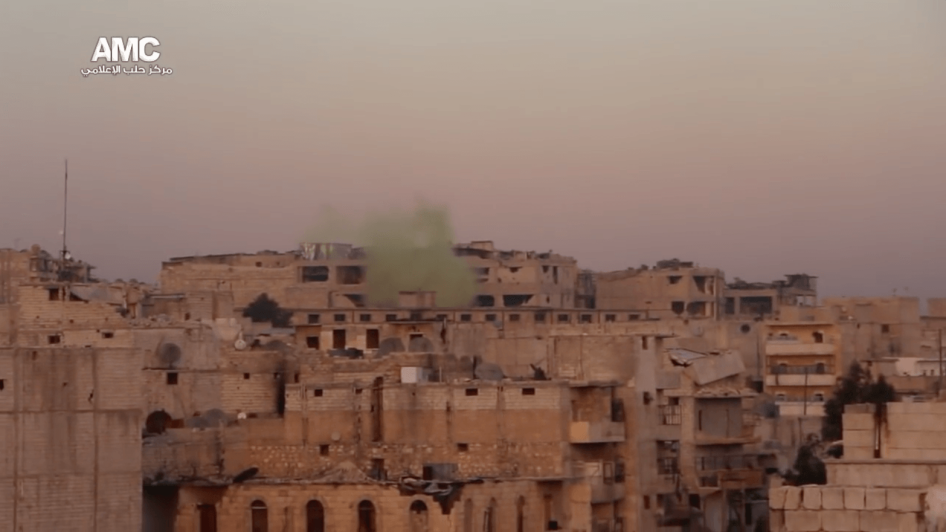On March 16, 1988, civilians in the Iraqi-Kurdish town of Halabja, awakened to a nightmare. Iraqi aircraft, ostensibly seeking to push back against Iranian and Kurdish forces fighting them in the grim final stages of the Iran-Iraq war, bombarded the city with sulphur mustard and Sarin, both deadly agents.
Media reports estimate that some 5,000 people—mainly women and children—were killed in this war crime; another 7,000-10,000 were injured, many of them permanently scarred.
Iraq had used chemical weapons repeatedly in its eight-year bloody war with Iran. But Iraq’s allies turned a blind eye though the attacks were no secret. Stories of Iraqi chemical weapon attacks against Iranian military units first appeared in the media in August 1983. On February 16, 1984, Ali Akbar Velayati, the Iranian foreign minister at the time, told the Conference on Disarmament in Geneva that there had been at least 49 Iraqi chemical attacks in border regions, leaving at least 109 people dead and hundreds more wounded.
As reports of Iraqi chemical weapon attacks continued, UN investigators visited the battlefields in the Iranian territories several times. In 1986, in a letter transmitting the investigators’ findings, the UN Secretary-General, Javier Perez de Cuellar, stated that: “In the circumstances, the secretary- general cannot but note with regret that the specialists have confirmed the use of chemical weapons by Iraqi forces against Iranian forces.”
Meanwhile, Iraq’s US allies were actively covering for Iraq. The Defense Intelligence Agency was quick to blame Iran publicly for the attacks, but declassified US intelligence documents showed that the US knew about those attacks and actually provided potentially vital military intelligence to the Iraqi army, showing little if any concern about the serious consequences of these actions.
Even after the Halabja massacre gained widespread media attention, UN Security Council resolution 612, adopted in May 1988, could only weakly state that it “expects both sides to refrain from the future use of chemical weapons...”After years of chemical attacks on both Iran’s fighters and civilians, that statement contributed to many Iranians’ bitterness and distrust in the international community.
Even though the international community failed to react adequately, Iraq’s use of chemical weapons was an important factor in the negotiations for a total ban on the use, production and stockpiling of chemical weapons as well as a prohibition on using the toxic properties of any chemical to injure or kill. In 1997, an international treaty, the Chemical Weapons Convention, entered into force and now has 192 member states – including Iran, Iraq and Syria. It is the most universal weapons ban in international law.
But today that agreement is under threat. The UN, rights groups, and the media have provided extensive proof that the Syrian government has conducted chemical attacks against Syrian civilians. Our latest investigation found that
Syrian government helicopters dropped cylinders filled with chlorine on opposition-controlled areas at least eight occasions between November 17 and December 13, the last weeks of the battle for Aleppo. Our researchers also documented that the Islamic State used chemical weapons both in Syria and in Iraq, and Amnesty International has documented that the Sudanese government likely used chemicals as weapons in Darfur last year.
Yet the Syrian government’s allies are more than willing to ignore the government’s serious breach of international law that these chemical attacks represent.
On February 28, Russia and China vetoed a UN Security Council resolution to sanction Syrian government officials and entities and the Islamic State for conducting chemical warfare. The resolution was offered amid fresh reports of government chemical attacks in eastern Aleppo and following the publication of an October 2016 report by the UN and the Organisation for the Prohibition of Chemical Weapons (OPCW) Joint Investigative Mechanism that concluded that the Syrian government used chlorine as a weapon on at least three occasions in 2014 and 2015, and that ISIS had used sulfur mustard, a blister agent, at least once.
Russia’s veto to protect its Syrian ally from sanctions at the expense of accountability and civilian protection, is hardly a surprise. But Syria’s other powerful ally, Iran, should feel compelled to pressure Syria to end its chemical warfare and punish those involved.
Knowing the horrors of chemical weapons first-hand, Iran’s leaders also have a legal obligation to use their influence with the Syrian government to signal that any use of chemicals as weapons is unacceptable, and that those responsible for ordering their use should be held accountable.
There is a museum in Tehran— the Museum of Peace—highlighting the misery and human devastation the Iran-Iraq war wrought on both veterans and civilians. In 2002, when a newspaper editor from the UK editor visited the museum, a guide permanently scarred by Iraqi mustard agent, Hassan Saadi, told him, "We want to show the whole world that chemical weapons have done this to us. We want to show how painful the consequences are. We don't want revenge. We just want to show what happens so it won't happen again." Iran owes it to Iranian victims like Saadi, to stand up for justice and support of the international ban on these horrific weapons.










